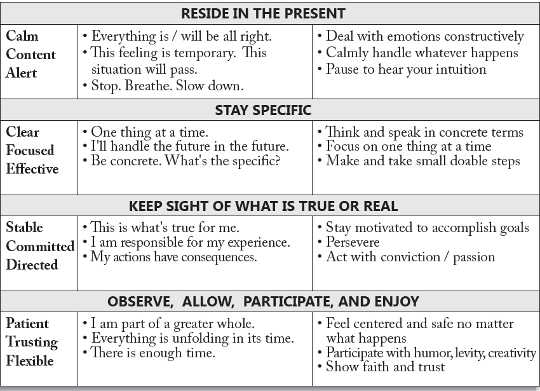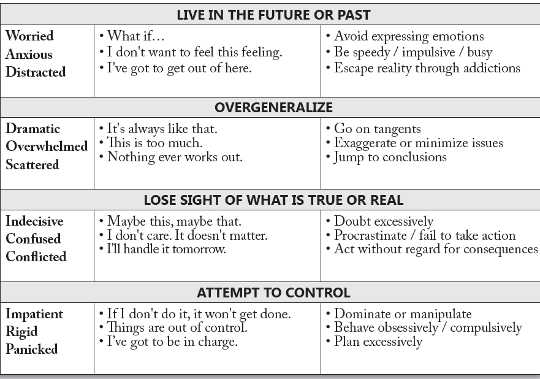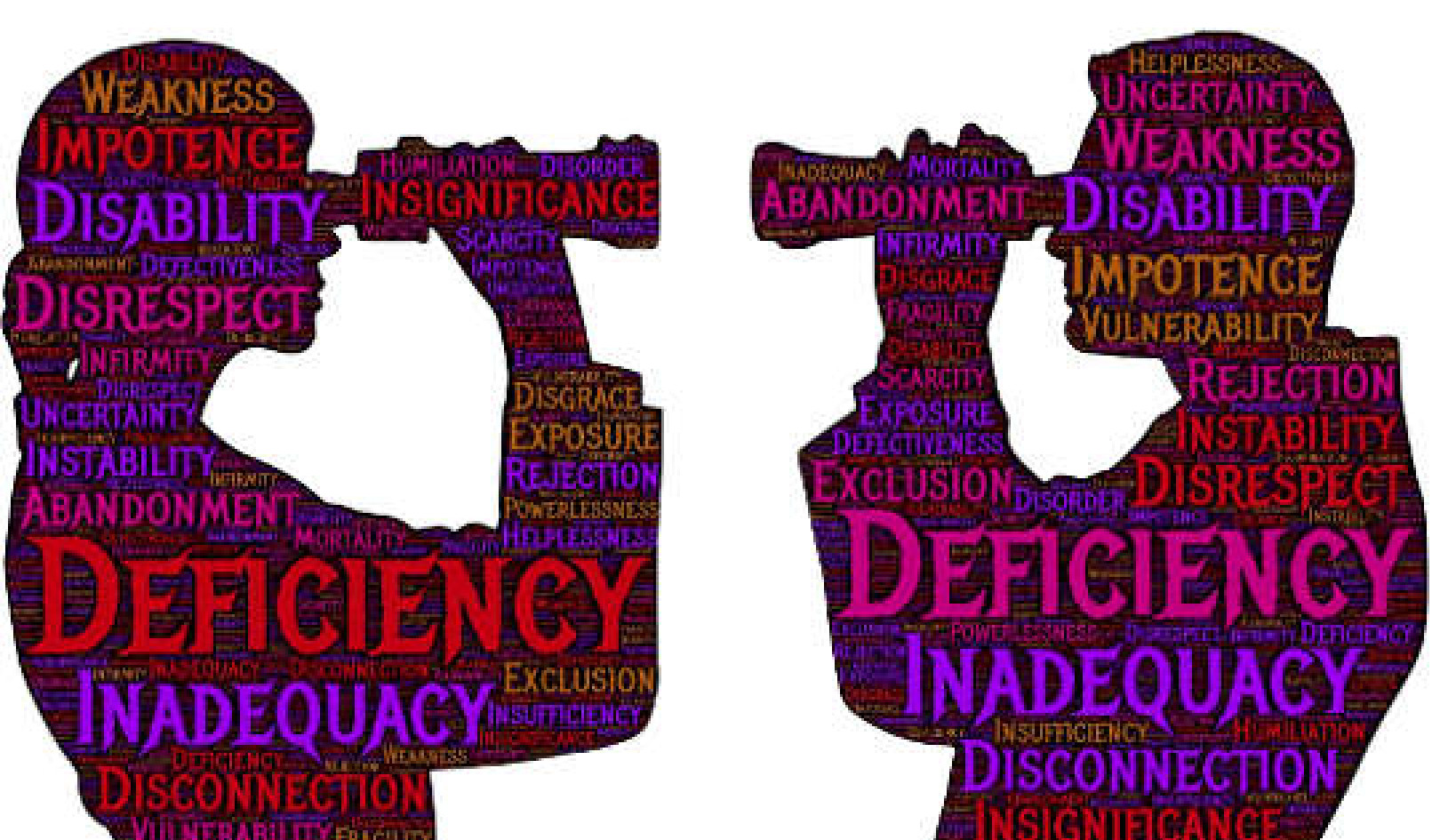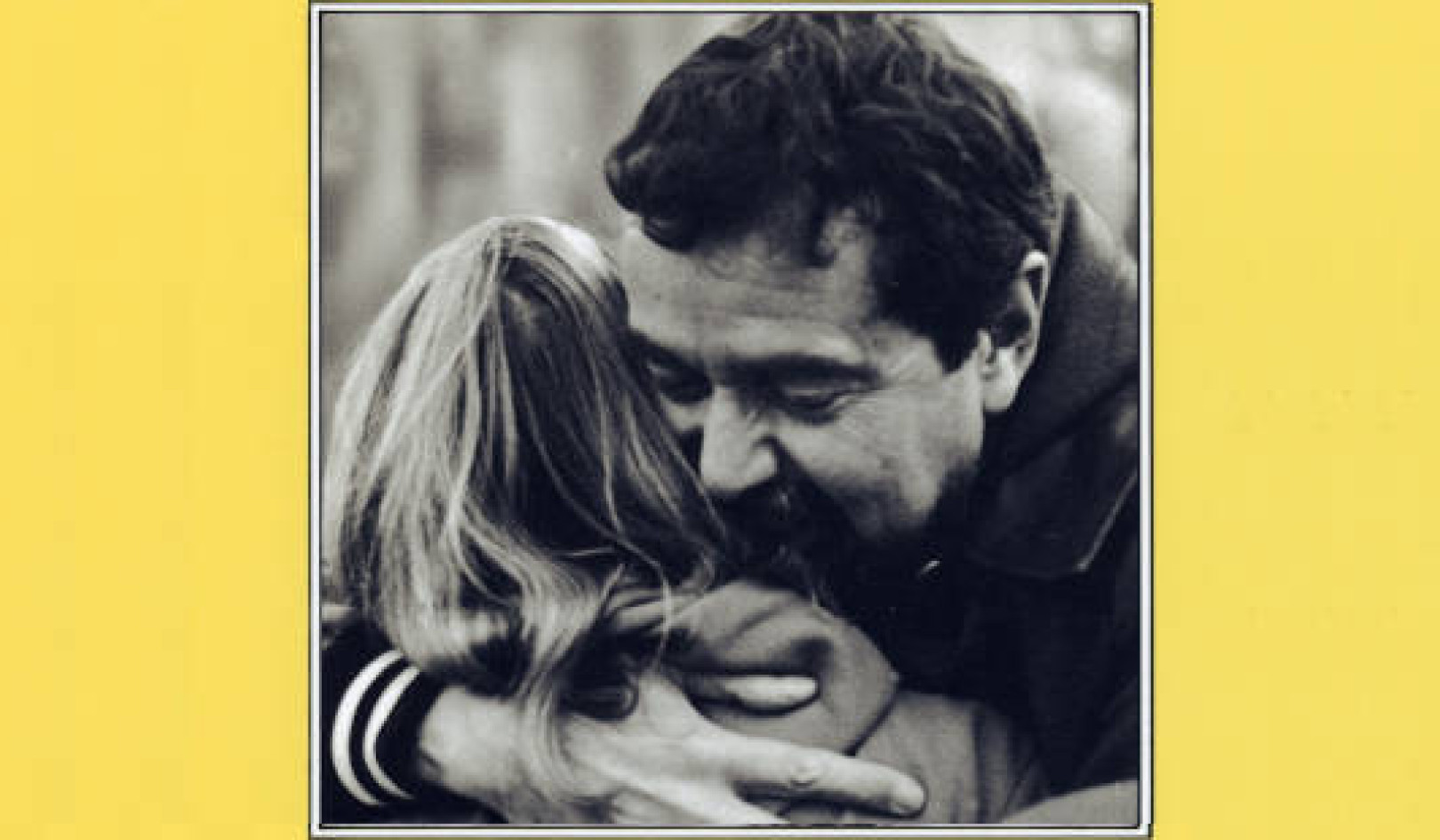
Peace is one of human's six emotions. It's the opposite of fear. When we're experiencing peace, our attention is in the present, we're relaxed, content, and our mind is still. Often it's thought that we need to meditate in order to feel peace, but it's not true. We simply have to pacify our fear and peace will naturally arise.
According to Attitude Reconstruction, this is a summary of the four core attitudes, including the feelings, thoughts, and actions, that are associated with the emotion of peace. When we experience peace our attention is fully in the present, and we observe, allow, participate, and enjoy the now.
Experiencing Peace
PEACE: calm, silent, alert, aware, smiling, breathing fully
TIME: Stay present and specific

In contrast, people whose most dominant emotion is fear are easy to recognize. In general, we are the "speedy ones," focused on time and money. We're agitated, nervous, and anxious. There is a tendency to be skinny. Mentally, we feel that there's never enough. We're in the future, and speak about the past by making huge over-generalizations that only stoke more fear.
We tend to be worriers - scattered, confused, overwhelmed, dramatic, panicky, or controlling. If you ask us, we will tell you that peace is something that's desirable but elusive.
Below are the four core attitudes associated with fear, as laid out on the Attitude Reconstruction Blueprint.
Experiencing Fear
FEAR: cold, shivering, quivering, laughing nervously, breathing irregularly
TIME: Live in past or future and over-generalize

Since "peace" is the opposite of "fear" it makes sense that if we deal with the fear, peace will be nearby.
People whose most dominant emotion is fear are easy to recognize. In general, we are the "speedy ones," focused on time and money. We feel that there's never enough. We tend to be worriers - scattered, confused, overwhelmed, dramatic, panicky, or controlling. If you ask us, we will tell you that peace is something that's elusive.
Four Ways To Easily Decrease Fear And Increase Peace
Here are four ways to easily decrease fear and increase peace, according to Attitude Reconstruction. By following just a few of these simple suggestions, I'm certain you'll soon find that you enjoy whatever your day brings, and you're able participate with more humor, ease, and equanimity.
1. Shiver the fear out of your body rather than tightening up.
Emotions are just pure physical sensation in your body. So allow yourself to physiologically express the fear you feel rather than tightening up. When I feel nervous, jumpy, agitated, or my mind is racing a million miles an hour, I let my body do what's natural. I vigorously shiver, shudder, and shake all over, like a dog at the veterinarian. Though it can seem weird, silly, or contrived at first to jiggle, shiver, tremble, and let my knees knock, I almost immediately feel more relaxed, centered, and able to focus.
When I can't sleep at night, need to return a scary telephone call, or make a presentation, I duck into the bathroom, shiver for just a minute or two, and remind myself: "It's okay to feel scared. I just need to shiver." The result is almost miraculous. This one simple activity restores calm and brings me back to the present. Give it a try!
Here is a video that demonstrates shivering.
2. Interrupt thoughts about the future and past, and avoid over-generalizations.
To keep things manageable and in perspective, keep bringing yourself back to the present. And be specific about the concerns at hand, rather than generalizing about your whole life, your relationship history, your character, the world, and so on.
The words "always" and "never" fuel fear. Likewise, bringing other unresolved issues into the specific topic you're grappling with is like putting gasoline on the barbecue. It makes reaching a satisfactory resolution nearly impossible.
I highly recommend that, over and over, you tell yourself reassuring things. Many times a day, repeat whichever of these phrases will be most supportive: "Everything will be all right. Everything is all right. One thing at a time. Everything is unfolding in its own time. I'll handle the future in the future. Be here now. Stay specific."
3. Break big projects into a series of simple little pieces, and attend to one thing at a time.
The key to managing fear and life's tasks is to take the time daily to get organized. For each task you need to accomplish, start by articulating your goal. With that in mind, break the goal into a series of little doable steps. Make each step small enough so you know you can do it.
If you keep an ongoing list of exactly what needs to be done by when, you can evaluate what's most important and essential for today. I put my to-do list in an obvious place by the computer so I can see it. Then I just do what's next, and offer myself copious praise for each small victory.
4. In terms of lifestyle choices, strive to establish a regular, more relaxing routine.
Get more sleep. Don't miss meals. Cut down on the coffee and energy drinks. Stay out of cold, damp, and drafty places. Reduce the amount of stimulation you expose yourself to.
You'll feel better if you spend time engaging in less frightening or anxiety-producing activities, situations, movies, or games, and more time doing relaxing things, such as gentle walks, watching sunsets, and listening to calming music.
Extra Bonus -- Mapping Emotions and Feelings in the Body
Researchers in Finland did a study and came up with infrared body mapping, based on where people reported the sensation of an emotion. Here's a video of the results.
{vimeo}85262710{/vimeo}
©2019 by Jude Bijou, M.A., M.F.T.
All Rights Reserved.
Book by this Author
Attitude Reconstruction: A Blueprint for Building a Better Life
by Jude Bijou, M.A., M.F.T.
 With practical tools, real-life examples, and everyday solutions for thirty-three destructive attitudes, Attitude Reconstruction can help you stop settling for sadness, anger, and fear, and infuse your life with love, peace, and joy.
With practical tools, real-life examples, and everyday solutions for thirty-three destructive attitudes, Attitude Reconstruction can help you stop settling for sadness, anger, and fear, and infuse your life with love, peace, and joy.
Click here for more info and/or to order this book.
About the Author
 Jude Bijou is a licensed marriage and family therapist (MFT), an educator in Santa Barbara, California and the author of Attitude Reconstruction: A Blueprint for Building a Better Life. In 1982, Jude launched a private psychotherapy practice and started working with individuals, couples, and groups. She also began teaching communication courses through Santa Barbara City College Adult Education. Visit her website at AttitudeReconstruction.com/
Jude Bijou is a licensed marriage and family therapist (MFT), an educator in Santa Barbara, California and the author of Attitude Reconstruction: A Blueprint for Building a Better Life. In 1982, Jude launched a private psychotherapy practice and started working with individuals, couples, and groups. She also began teaching communication courses through Santa Barbara City College Adult Education. Visit her website at AttitudeReconstruction.com/
* Watch an interview with Jude Bijou: How to Experience More Joy, Love and Peace
* Watch video: Shiver to Express Fear Constructively (with Jude Bijou)
Related Books
at InnerSelf Market and Amazon





























